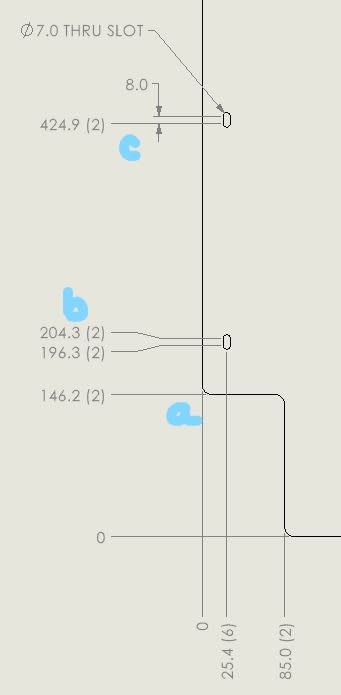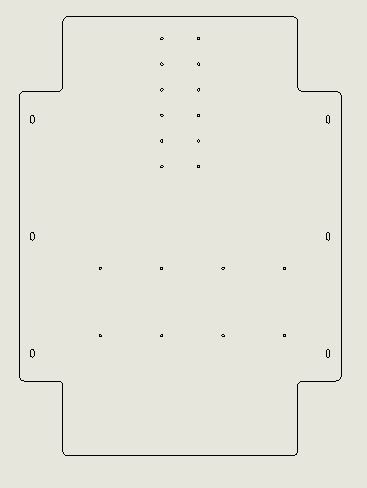I feel like the class teaching how to make graphs is missing some students.
Depending on who the target audience for this particular drawing is, it is more typical to either locate the slot ends, which is what a CNC nibbler software is looking for - they automatically subtract the slot half-width as the radius of the punch.
Alternatively if there is a punch that is made for that exact slot then dimension to the center of the slot and call out the length and width directly or by note or by tabulation.
There is a slight chance the CNC will be used to nibble in a way that one would dimension the start and stop locations of the straight sides of the slot, but this changes the slot length when the slot wide changes, a typically unwanted, but not impossible requirement. Not sure why a longer slot should happen if the slot is made wider.
In manual machining locating the ends of the slots is preferred. The metal worker just scribes them and plunges at some place along the slot and advances the cut to one end and then reverses to the other end, coming just tangent to the marks. This way no matter what the radius of the cutter is the travel allowed by the slot is the same, particularly if the cutter is at the small end of the width tolerance.
It would be untypical to show the delta location (the "8", in this case.) The point of ordinate dimensioning is that any number in the series is the exact value of the distance from the origin with no further computation. This would be an exception. Not illegal but it increases the chance of not getting what was desired.




